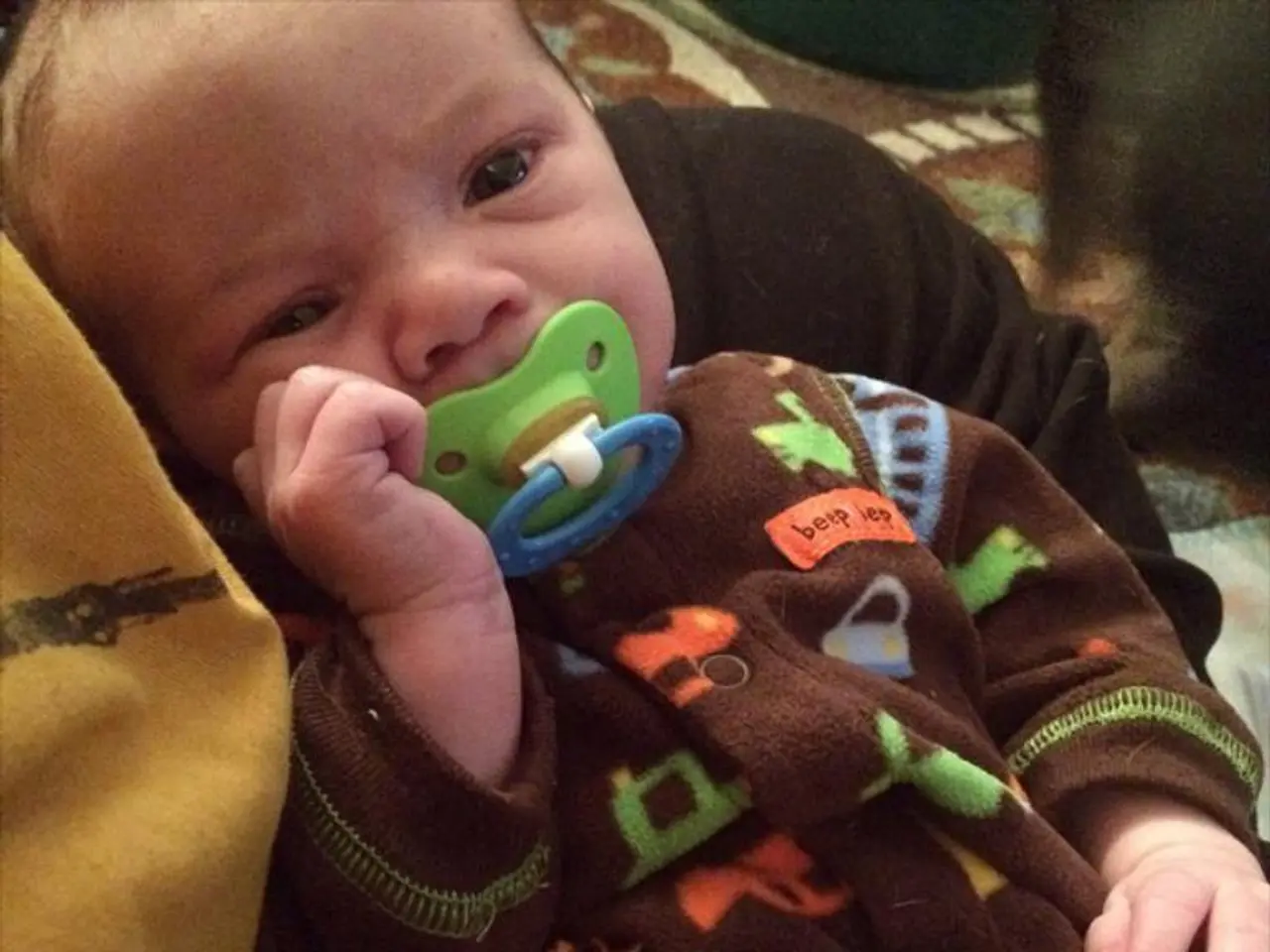Nipple hair: Origins, remedies, and common occurrences - normal or not?
Hairy nipples in women are a common condition that can be attributed to various factors, particularly hormonal influences and certain medical conditions.
One of the primary causes of hairy nipples is hormonal changes. Fluctuations in sex hormones, especially androgens like testosterone, can stimulate male-pattern hair growth around the breast and nipples. These changes often occur during puberty, ovulation, pregnancy, and childbirth.
Another common cause is Polycystic Ovary Syndrome (PCOS), a hormonal disorder affecting 5% to 26% of females. PCOS causes overproduction of androgens, leading to excessive hair growth, including on the nipples.
Cushing Syndrome, characterised by exposure to high cortisol levels, can also cause excessive hair growth, including on the breasts and nipples.
Genetics, ethnicity, and race may also play a role in nipple hair presence.
When it comes to cosmetic treatment options, women typically consider various methods for temporary or long-lasting hair removal. These include hair removal methods such as waxing, plucking, shaving, or depilatory creams, as well as more permanent solutions like laser hair removal or electrolysis.
However, it's important to note that shaving nipple hair should be done with caution to avoid nicking the sensitive skin, and it carries an increased risk of developing ingrown hairs and infection. Bleaching or using hair removal cream is not advised for the sensitive nipple area as it may cause irritation and damage.
Sugaring or waxing can be painful and are best done in a salon to avoid skin damage. Laser hair removal can help reduce hair growth and slow or prevent regrowth, but it is a painful and expensive option.
For underlying hormonal causes like PCOS or Cushing syndrome, doctors may prescribe medications to regulate hormone levels, such as anti-androgens or birth control pills. A doctor can also advise how to remove nipple hair safely and perform tests to determine if an underlying cause, such as PCOS, is causing the growth of nipple hair.
It is always advisable to consult a healthcare provider to rule out underlying medical conditions and to determine the most appropriate treatment strategy tailored to individual hormone levels and health status. Trimming the nipple hair can reduce its appearance, and tweezing should be done with caution due to the soft and sensitive skin around the nipple area.
Hairy nipples are a common condition and are usually not a sign of any underlying health issues. However, if you are concerned about hair growth or changes in your nipple area, it is always best to seek the advice of a healthcare professional.
- Women's health and hormonal fluctuations are interconnected, as hormonal changes often lead to male-pattern hair growth around the breasts and nipples, a condition commonly observed in females.
- Dermatology plays a crucial role in addressing hairy nipples, as it offers various treatment options ranging from temporary hair removal methods like waxing and shaving to more permanent solutions like laser hair removal or electrolysis.
- In the realm of science, hormonal disorders such as Polycystic Ovary Syndrome (PCOS) or Cushing Syndrome can cause excessive hair growth on the nipples and must be treated with medications prescribed by healthcare providers.
- Besides hormonal causes, genetics, ethnicity, and race may also impact the presence of hairs on nipples, underscoring the importance of understanding health-and-wellness from a holistic perspective, including mental-health and women's health.




